#i will try and draw every character in the characters journal. with tweaks to their design if i see fit bc why not
Text

back on my star stable bullshit.
#because i'm the type of person who gets crazy amounts of happiness from completing sets of things#i will try and draw every character in the characters journal. with tweaks to their design if i see fit bc why not#maybe after that i will do every place listed on the map. (i need practice with landscapes)#i can't be stopped#fun fact this also doubled as a skin and lighting study#sso#star stable online#linda chanda#sso linda#my art#artists on tumblr#digital art#star stable#star stable art
101 notes
·
View notes
Photo
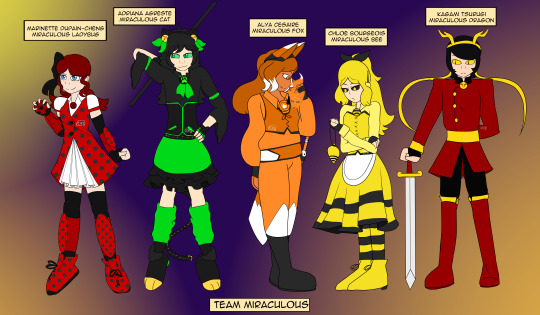
I wanted to do some designs that were more Magical Girl Esque for Miraculous Ladybug, and by the time I started drawing Chat it was officially a Sleepless Domain AU because Sleepless Domain is a really interesting deconstruction of Magical Girl tropes and conventions without being overly hopeless like other deconstructions usually are.
(if you’re thinking ‘where’s Nino?’ he’s at the bottom of the cut so please don’t reblog this asking that)
for those who aren’t usually into webcomics, here’s the basic rundown and how the ML crew would fit into it:
The world of sleepless domain is... I suppose one could call it a post-post apocalypse along the limnes of Nausicaa and the Valley of the wind. Where something deeply magical and horrible ravaged the lang long ago. But this one city, currently unnamed, has been rebuilt in thanks to the magic they have sustained. This magic takes two forms. The barriers, and the Magical Girls.
The Barriers are in fact two of a kind, the outer barrier and the inner barrier. The outer barrier keeps the monsters out for most of the day, it’s a huge dome like structure that surrounds the city, no one can go in or out when the outer barrier is up. But the Outer barrier needs recharging for about 4 hours every night, from 10pm to 2am. And when the outer barrier goes down, the inner barrier forms. The inner barrier is a sort of seal along every closed surface of the city, it can be breached if a monster is strong enough or has enough time to chip at it, but it can also be opened from the other side by the people inside.
Which is where the Magical Girls come in. It’s currently rooted in mystery just how and why they get their powers, but when a girl gets her powers she’s usually around age 14, where she gets a mysterious, cryptic dream (some claim their dreams are creepy or depressing, while others find them almost serene) which ends with something, everyone knows there’s more to their dream but can’t remember it for the life of them. and when they wake up their hair and/or eyes have changed to some unnatural color, and a mark of the same color has been left somewhere on their body. The powers usually leave when they become a young adult. it’s not been specified if there’s an exact age, but the 18-20ish area seems most likely.
The Magical girls are tasked with fighting the monsters as the outer barrier goes down so as to make sure they don’t attack any helpless civillians on the inside of the inner barrier. there’s a lot of commentary on how Magical Girls are treated as both quasi-diefied saviors and straight up commodities throught the story. And as such it’s encouraged that Magical girls work in teams to maximize profit.
So this is the real shit on how Team Miraculous fits into the story
So Team Miraculous is a Non thematic team, in that despite all of them being based off of animals, they weren’t recruited with the intent on being a matched set. Thematic teams are usually shown to be thematic by having similar outfits, complimentary color schemes, and matching Marks.

Team Miraculous’ Animal theme is mostly coincidence.
So, as for the Ml kids themselves:
Marinette is the daughter of a former magical girl, Sabine Cheng AKA Shooting Star from the thematic Team Star. Sabine was... one of those kids that the city doesn’t like to talk about, someone who had a kid while she was still an active magical girl. Thankfully Team Star was only quasi popular and more of a ‘cult following’ than more overtly famous, so when Sabine quietly retired less of a fuss was kicked up than it could have been. It’s not a very common thing to have a kid while still a magical girl, but there is a precedent. When Marinette was born Sabine’s magic left her, and went into Marinette. There wasn’t much of a change other than her eyes. the color of Sabine’s magic. So when Marinette got The Dream it was inevitable. Sabine herself mostly encouraged Marinette to persue becoming a proper Magical Girl and as it turns out, the Magic that had left Sabine is now hers to channel.
Miraculous Ladybug’s power is not only Unlimited Lucky Charms (because we have no need for ML’s nerfing of the main characters anymore) but also ‘Lucky Streak’ which is based on her PV powers a little. Basically for a limited time whatever she’s attempting to do will turn out well for her, like the marvel lady Domino.
For the sale of a Five Man Band, and also the iconique nature of the black Cat, Adrien had to be here too, so since there’s already one instance of ‘trans women are real women you fuckwads’ in Sleepless Domain, i’m throwing another in the ring. Adriana Agreste. However unlike Zoe, Adriana was thankfully allowed to come out on her own terms. Mr. Agreste took it... surprisingly well. It was when, two weeks later, that Adriana woke up with black hair and her scleras turned green that he freaked out. THAT’s the fight of the century right there. that’s Daddy dearest confining her to her room, insisting any tutor he could hire would be EONS better than anything at the Magical Girls Only Highschool in the city, and that’s when Adriana sneaks out. She’s not sneaking out to go to Future’s Promisce, she’s sneaking out to register herself she wants to fight, to have this peice of her mother, and maybe understand her sacrifice a little better, her father finds out of course, but adriana’s refusing to stop, After she got registered her counsilor offered to move her into Future’s Promisce’s dorms. So she’s given Gabriel an ultimatum. Either he lets her go to public school and fight, or she’s moving out, needless to say, Gabriel relents. And that’s how she meets Ladybug and the two become the founding members of Team Miraculous.
As Miraculous Cat Her powers have been tweaked a bit from canon. Altering Cataclysm to only work on Monsters, but only on monsters that have solid physical forms. If she can grab hold if it she can turn it into dust. But this pwoer takes a lot out of her. She can either do it one time a night on a large monster, or multiple times a night on small monsters. But alongside that she has that Calamity power that was hinted at in earlier notes and the PV, in that she can summon bad luck and cast it on monsters. Creating damages based on their surroundings.
Alya’s as she always was as a character backstory. Her mother’s a chef, her father works with animals (though likely he just runs a shelter instead of a zoo since you know... dome city) But her older sister is an MG who just very recently lost her magic and is going to college. Alya still wants what she always wanted, to be a journalist and discover the truth. After what Nora went through as a Solo Magical Girl she wants to be the champion of the MG’s, since most news sites tend to lean into the idea of magical girls as they’ve been socially percieved as, Alya wants to show the world that magical Girls really are normal girls. That they don’t just exist to fight and die for the city. They have their own hopes and dreams. Sleepless DOmain seems to have decided that home technology ended around the mid 90′s since CD’s and corded phones are the norm, so Alya’s Self published journalism outlet is a newspaper instead of a Blog. She’s barely into making the deals with the printing company when she gets the Dream, and decides that’s even better, giving the city a first person perspective as a Magical girl. She opts to join her childhood friend Marinette’s team and become Miraculous Fox, since they’re already non thematic and it’d be easier to work with someone she already knew.
Alya still has an illusion based power of course, unlimited Mirage and all that. but most notably she’s the recon lady. able to summon a small orange fox that can do low level damage to enemies and more importantly she can see through its eyes so they don’’t have to rush into battles blind. She communicates with her fox with her flute when the little guy’s away from her. And she’s almost always seen taking notes on battles and what she learns from other MG’s for the next edition of The Magical Girl Banner
Chloe, of course, doesn’t initially go into this with the right intent in mind. when she was a kid she’s often try to dye her hair and draw marks on her skin in marker, claiming that she got her magic early. She wants the notoriety and fame that comes with being a Magical girl, and using the unfounded rumor that her family is actually descendant from the Founder herself as a reason why she DESERVES to get her magic early. of course, when her frequent target arinette is first to transfer out of their class due to actually BECOMING a magical girl, Chloe is pissed an flips a 180 on her stance, saying that being an MG is overrated anyway. then Cesaire transfers out too, then Lahiffe is asked to be their group’s manager. Chloe is so enraged by seemingly everyone around her becoming MG’s and not her, that whens he finally DOES get her magic she almost turns it down. especially since, for all her attempts to look like she got her powers early, they actually developed in her a year LATER than they should have. Straight up when she comes to class the next day to boast her ACTUAL magic, nobody belives her, thinking she simply put in yellow eye contacts. her hair doesn’t look particularly darker than it was before, her scleras don’t turn black until she’s transformed, and her mark is barely visible when stood against her skin. She ends up on Team Miraculous initially out of necessity, but that’s only the START of her character arc.
Chloe’s magic is more similar to Queen Wasp than Queen Bee. not unlike Alya she has a swarm of bees at her disposal, magic bees of course, they in fact help her fight. her most notable move is sending them swarming on monsters. But instead of paralyzing anything, the bees will turn into small lightning bolts, turning into an inescapable fury. She probably COULD use her bees to paralyze a monster, but that’s more being a team player than Chloe can do right now.
And Finally Kagami. Kagami is also as she always was. a long standing family, rumored to have had Magical girls in the line since Magical Girls first came about. The eldest daughter in every generation of theirs has become a Magical girl, and that runs true again in Kagami. She was groomed form childhood to fight, learning swordsmaship, archery, fighting with a bo staff, and learning any and all magical theory. her family are one of the ones that worship the deified idea of the founder, so it’s no surprise that Her Mother’s first step after Kagami becomes a magical girl is to get her registered and enroll her at Future’s Promisce. What she DIDN’T expect was her mother to dump her off at the dorms, give her a quick ‘behave yourself’ talk, and then leave. Kagamis’ mother was the second oldest, the only reason she inhereited the family name was the fact that her sister had died long ago. Kagami justifies being arguably abandoned at age 14 with her mother holding a secret resentment toward magical girls. The magic that took her sister away, and threatens to take her daughter too. That’s why she traiend Kagami but then sent her away. that’s why her life makes sense. She’s initially against joining Team Miraculous, that None of the Tsurugi’s before her had ever been in a team. But through her own lonlieness, about two years after she got her powers, she gives in and lets herself go from ‘Dragon’s Fang’ to ‘Miraculous Dragon’
Kagami’s got the sharpest deviation from her Canon power. I really coudln’t think of a way to make the Magic aspect work, so the best I’ve got is the transformative aspect. That’s right, Kagami’s magic lets her literally transform into a dragon. She has a sword to fight with when not transformed but the bulk of her magic is in the dragon form. She’s a mix of japanese dragon and western dragon, I don’t have the design finalized yet, but she’s got fire breathing and gold aesthetic, but also more directly japanese looking in design.
And as a bonus for sitting through all of this absolute garbage:

Nino, long time friend of Marinette’s was asked to be her team’s manager when they realized they couldn’t represent themselves.He instantly clicked with Adriana and became best buds. After which he was given the honorary title of Miraculous Turtle.
As a deal with Mr. Agreste for him not to hire a more experienced manager, Nino has to look presentable when doing managerial things. That means a suit. He can wear the hat and headphones, mostly because he hides them when They’re going to grab Adriana at around 9, but he has to wear a suit if he wants anyone to take him seriously.
#Miraculous Ladybug#marinette dupain cheng#Adrien Agreste#chloe bourgeois#alya cesaire#Kagami Tsurugi#Crossovers are neat#sleepless domain#no seriously go read the comic i cannot do the brilliance of the worldbuilding justice in ONE tumblr post#Nino Lahiffe#kinda#he's just an Omake so idk if he counts#crossovers#Team Miraculous
20 notes
·
View notes
Text
planning a story
Planning a story goes differently for all writers but is useful regardless of style. The plan and plot are the two main components of the skeleton of your tale (the characters being the heart) and go a long way when coming to write your story. An issue that many writers face today is that they know where they want to go by the end but not how they will get there. This is a reason why planning is an essential step before and during the process of accomplishing your goals. Whether you are a do-er or a thinker, this guide can come in handy and give your big idea a backbone.
Most people know the fundamental conflicts, characters, and goals of the story but cannot precisely grasp the ins and outs of their plan, missing out on some extraordinary plot twists and details that would otherwise be present if they had thought it through. Though a huge part of writing is the thought-dumping within it, we must make that those thoughts are comprehensible for others to read as well. We have to give ourselves motivation and a plan for how we will make them into a unified piece. Below are some neat tips and common sense that should be kept in mind when completing the plan.
Keeping A Journal/Notebook
Maintaining a physical copy of your thoughts is crucial when coming to plan. Whether it is noted on a laptop or scribbled on a napkin, you should have an account of what you were brewing in your mind that will help you later. No matter how insignificant or silly it may seem, you should write everything that comes to mind. I cannot tell you how many times I wished that I'd written down or remembered a small detail from before only to have it gone in an instant. Unfortunate, yes, but I learned to document because of it.
These things can include small excerpts, quotes, twists, ideas for characters, ideas for events, and pretty much anything else. The sky's really the limit here.
Have a Basic Sense of Your Story Before Your Plan
Super simple. Exposition, Conflict, Rising Action, Climax, Falling Action, Denouement. You know all of this but in case you forgot, I'll put a little summary underneath.
Exposition: Setting, main characters, foreshadowing (although it can be present all around), and an introduction. Who is your story going to be about? Where are they? Give us a taste of their personality before we begin so we can connect and anticipate what will happen next.
Conflict: What's the problem of the story? How does the character find this out? Is it that they won the lottery and don't know what to do with the money or are they held at gunpoint in a Chinese Resturant? This is the central conflict of the story, but there can be more mini ones later on, which we will find in rising action. (Note: it is possible to start your story with conflict, however, make sure to include the exposition as you go on and about)
Rising Action: How are your characters trying to achieve their goals? How did they develop and what did they learn? What were the hurdles along the way and how did it shape them to be the people that they are? If you are writing in mystery, be sure to mull this through. The rising action is the bulk of the story and should not be taken lightly.
Climax: Is it a plot twist? A grand revelation? The ultimate fight scene? In any scenario, it's the most intense bit, and we discover the results.
Falling action: everything from the climax and rising action coming into place. This is where you decide if the character has resolved the conflict or not and how things are settling down.
Denouement: Aftermath. An epilogue maybe. It goes hand in hand with the falling action and shouldn't be too long. It's basically just ending your story.
Point of View
How will you tell the story and how will that cater to your readers? First person or third person? Past tense or present tense? Remember, this depends solely on your preference and comfort, no one being better than the other. Though past tense with third person may be traditional, it is not out of date, the same for present tense with first person not being careless. Most readers don't judge stories based on this so leave it up to yourself to choose. You are writing your story, the one that you've worked so hard on so be comfortable with it!
So, this may have been pretty elementary but do not forget it! You must at the very least know these details and write them down in a place where you can expand on them later. Also, this is BEFORE you start to write. Yes, you can add on more (something I will be touching on in a short bit), and you can also keep notes at the bottom of your document, but this is the bare minimum. Do it, and you'll thank yourself later.
[For those who don't need to plan as much, feel free to scroll to the bottom for organization ideas. You can also, as I stated earlier, plan while you are writing your story. This can be found below]
So, we've finished the basics but for those of you wanting a more elaborate storyline, expand. The following are some methods of doing so.
Do Your Research
Is your story based on a real-life event or setting? If so, research! Find out how life is/was like there, if the area was large or small, highly populated or not. What are/were the norms? Please don't lay out every detail but rather, be aware of them, applying them to your character and plot when necessary. I mean, how will your character live otherwise? Although it's fiction, we can't have a man in the 1720s scrolling through Tinder now, can we? (unless that's your purpose, of course)
I know it may be a pain, but it's loads of help too! Trust yourself and go ahead.
Build Your World
Writing fantasy? Think it out! What is your universe like? The laws? The norms? I, personally, don't have too much experience in this area but I am sure that you can find a post or article that will highlight it. In fact, here you go!
Character Development
Where has your character come from? How did they get from A to B and what lessons did they learn to do so? What are your As and Bs? I'll put up a character development post soon enough, but for now, you can refer to this.
Details
What additional information do you need? Is it the placement of a can of beans that will be crucial later on or a slip in an antagonist's dialogue? Write notes as to how this will be important later in your story and why. Stick to the key events and let your writing do the rest.
DO NOT plan out your WHOLE story. Yes, chapter by chapter is okay, but not everything down to the T. Give yourself a break and space for your imagination to flow. Have boundaries but don't choke yourself.
Additional Components/Expanding
Character development, description, and dialogue do not necessarily have to be planned out as stated earlier but keep the main details in mind. Go back to the journal entries, go back to the research and merely expand. How will your story be better with a little tweak? What about this character? Those types of things.
Remember, with every action, there is a reaction. This is very important to consider when drawing up your plot. If you are aiming for a more realistic type of story, make something go wrong. Increase the stakes. Make your character's stakes evident. What are they willing to do? If it can go wrong, it will go wrong, and with writing fiction, there are many possibilities.
So, with all of that being said, you now have your plan! You know what will happen, how it will happen, and some other details too. But now, how will you organize your thoughts? Though some of you may be okay with going back and forth between pages and pages, others may want a bit more structure. Luckily, there are many different, and unique templates and systems that you can use that will fit with your story perfectly. Ranging from the basic Exposition - Denoument to a massive spreadsheet, there are many options to chose from. Simply, select the one that is best for you.
If you are more of a visual thinker, try a flowchart or mind map. If you like detailed, maybe go chapter by chapter. If you fiddle a lot while writing or like to feel things, try making your own storyboard. Not only will you now have a customized planner, but also more motivation to write. (I mean, if you came this far then surely you'd want to finish it?) And that's what it's about. Really making the story matter to you. Yeah, you may have a dozen other projects waiting in line, urging for you to start them but this way, you finally can sort out your priorities. You can finally work.
So, that wraps up planning for now. I've attached some useful links below that can help you further, but if you have any questions, please don't hesitate to ask. I'm always here and ready to help at every step of the way. I hope that I didn't miss anything too important, but if so, I can certainly post them later. Keep an eye out for updates and feel free to interact. With luck, this helped, but for now, it's all. Thank you for reading this far and have a great day!
link number one
number two
number three
four
five
#writing#writers on tumblr#writing advice#improve your writing#writing tips#plot development#plot#plan#planning#planning your story
103 notes
·
View notes
Text
6 Tarot Spreads To Improve Your Shadow Work

Julie Hopkins
Shadow work is a practice of healing any behaviours, emotional wounding, limiting beliefs, self-sabotage, or blocks that are buried in your subconscious. This work is important for witches because many of our spells are powered by our thoughts and emotions. Because most of our thoughts and emotions happen within our shadow side, our subconscious, taking a long, hard look at those thoughts and emotions can help us release any hidden resistance that hinders our spells.
Why Tarot Can Help
Tarot is a wonderful magical tool to use when doing shadow work for several reasons.
Tarot cards have rich imagery, and imagery is the language of the subconscious.
Tarot cards can allow you to speak directly to your subconscious or to any spiritual guides who can give you insight into your shadow side.
The variety of characters and situations in the tarot deck can provide you with a detailed look at where you need to heal and how to go about healing. Tarot can effectively show you where the problem is and what your options for solving it are.
How To Prep When Using Tarot Cards For Shadow Work
Shadow work is one magical practice you’ll want to be 100% grounded for before you dive in. Because shadow work can bring up a lot of emotions, make sure you are feeling as stable, secure, and supported before performing any of these tarot spreads.
My favourite grounding techniques to do before tarot work include sipping a warm beverage, enjoying a bit of chocolate, or curling up in my comfiest chair. Do whatever you need to do to make yourself feel nurtured.
The Energy Of Different Shapes
You’ll be directed to make different shapes and lines with your tarot cards with each spread. You can use the shapes as the spread suggests or choose a different arrangement based on the meanings of the shapes the intuitively resonate with you.
Circles represent completion and closing out old cycles—excellent energy for shadow work. Every time you heal an emotional wound, you close out a cycle and you are released of any limiting thought patterns that stemmed from that wounding. Ultimately, that is the goal of all shadow work.
Squares represent stability, protection, and strong foundations. Use this shape if you want to feel extra grounded and safe while performing your shadow work.
Triangles represent power and manifestation. Use this shape if you want to stay in a place of power during your shadow work and repel any sort of victim mentality.
A vertical line holds the energy of “ascension” or raising your vibration. This is another goal of shadow work.
A horizontal line holds the energy of progress and forward motion.
6 Tarot Spreads For Shadow Work
1. Is This the Right Time Tarot Spread
Sometimes when I read tarot for myself, I won’t understand the cards at all. It feels like they’re speaking gibberish.
In my experience, when this happens, it means I’m not in the right mindset to perform shadow work, I’m not ready to see or understand the information I need to heal, or my cards need to be cleansed.
Because this has happened many times during a tarot reading, I’ve developed a quick spread to perform at the beginning of a shadow work tarot session to see if I’m in a place to benefit from this kind of work.
Suggested arrangement: In a horizontal line from left to right.
Card One: What is my current emotional state?
Card Two: What energies will come up during this shadow work session?
Card Three: What specific personal issues will I be directed to examine?
Card Four: What energy can I expect to feel after this shadow work session?
If the cards are giving you answers that make sense AND you feel these answers will be constructive and positive, then you know it’s a good idea to do this kind of work today. If you’re not understanding the answers the cards are giving you, you can either move forward anyway or perform some other kind of magic that day.
2. Talking To Your Spirit Guides Spread
Use this spread when you want to get some guidance from one of your spirit guides during your shadow work.
Suggested arrangement: Place the cards in an upside-down pyramid shape—three cards on the top row, two cards in the second row, and one card in the third row. This is symbolic of the spirit guide sending down the wisdom of the universe to you.
Card One: A card to represent your spirit guide’s energy
Card Two: What issue can you help me with today?
Card Three: What is blocking me from resolving this issue?
Card Four: How can I change my perspective regarding this issue?
Card Five: How can I heal this issue I’ve been experiencing?
Card Six: What other guidance do you have for me?
3. Hidden Gift Spread
Suggested arrangement: Set out these cards in a circle starting at the top and going clockwise.
Card One: What is my current situation?
Card Two: How do I consciously feel about this situation?
Card Three: How do I subconsciously feel about this situation?
Card Four: What lesson am I learning through this situation?
Card Five: How will I be stronger after I move past this situation?
4. That Card You Hate Tarot Exercise
Go through every card in your tarot deck and select the one you absolutely hate. The more times you do this exercise, the more likely this card will change depending on what kind of shadow work you are ready to do.
Once you’ve picked the card you hate, take a moment to gaze at the card. You can examine any details in the imagery or allow your eyes to become unfocused and see if you experience any more subtle reactions to this card.
Journal about all of your thoughts. If you aren’t getting enough information, draw a second card asking, “Why do I hate this card so much?”. Then examine this card the same way you did the first one.
A strong aversion to a specific tarot card is usually related to some deep fear we hold. Ask yourself what fears this card brings up. Journal about what experiences caused you to develop this fear. Ask yourself if this is a valid fear or if this is based in any limiting beliefs such as, “I’m not good enough.” or “There’s not enough to go around.”
If you realise that this is a valid fear, list some ways you can feel safer. How can you protect yourself, so you no longer have to fear this thing? Maybe this fear is something that is out of your control like worrying about the health concerns of a loved one. In that case, you can begin healing this fear by accepting that you don’t have control and releasing the worry.
You might also meditate holding this card to see if that allows any messages from your subconscious to come through clearer.
5. Love/Hate One-Card Pull
Like the exercise above, this technique is less of a spread and more of a journaling ritual. It’s designed to help you find answers as to why some things bother you. A key concept in shadow work is that many issues that annoy us in others are things that we, ourselves, do on a subconscious level.
Shuffle the cards and draw one card as you state your intention (aloud or in your head), “Show me a card that I love and hate.”
Take a moment to look over the card. Notice any immediate thoughts or memories that come up as you examine different details in the imagery.
In your journal make a list of all the aspects of this card’s energy that you love. Why do you like getting this card? What does it mean to you? What is attractive about the character or energy of this card?
Next, make a list of all the aspects you hate about this card’s energy. What bugs you about this card or this character?
Go through your list one at a time and try to think of an instance or area of your life where you embodied each of these qualities that you love or hate. If nothing is coming to mind immediately, sit with the card longer, or get up and make yourself a cup of tea and come back to the spread. Sometimes just getting up and moving will allow new thoughts to come to the surface.
Keep embodying the qualities you love about this card and begin to release any of the bad habits or the qualities that you hate about this card within yourself. Journal about different ways you can respond to situations using the qualities you admire.
6. What’s Going Well Tarot Spread
Suggested arrangement: Set the cards out in three rows of two cards. Space them out in a way that forms a square.
Think about what is going well in your life, then draw the first and second cards.
Card One: Why is this going well in my life?
Card Two: What energy do I need to keep making progress in this area of my life?
Think about what your biggest current issue is, then draw the third and fourth cards.
Card Three: Why is this issue holding me back?
Card Four: What energy do I need to improve this area of my life?
Think about a goal that you haven’t been able to manifest yet, then draw the fifth and sixth cards.
Card Five: Why haven’t I achieved this yet?
Card Six: What energy do I need to meet this goal?
These parts of your life are likely related in some way. If it’s not obvious to you as you’re looking over the cards, spend time journaling and see if the answers or patterns emerge.
Tarot & Your Shadow Side
Shadow work is ongoing. It’s like cleaning your oven or doing laundry—if you do it on a somewhat regular basis, you’ll stay on top of it.
Some people think shadow work has to be this long, drawn-out process that makes you cry or drains you of energy, but I disagree with that. Theoretically, once you discover a false belief or emotional wound in your subconscious, you can heal it within minutes. You can heal so much in a short amount of time, especially when you find a magical system that works for you. Try out these spreads and see which ones feel the most meaningful.
Some of these might become your go-to spreads. Others you’ll use when you’re in the right mood. Many witches will tweak their tarot spreads by adding additional cards to a spread or changing the questions to better fit their needs. Feel free to personalise these tarot spreads however you like.
https://thetravelingwitch.com/blog/6-tarot-spreads-to-improve-your-shadow-work
0 notes
Text
Why saying there are new movies for Peter Parker (and that’s why we should have Miles) is stupid.
In recent months and years ever since the announcement of Peter Parker being the new Spider-Man of the MCU there has been shittons of backlash against the decision. A lot of this has stemmed from Miles Morales supporters who feel he should have been the Spider-Man of the MCU.
Whilst there is a lot to say about that (and I have) today I want to counter a fairly frequent point I‘ve seen more than once from that camp. That point being that Peter should not be used as the MCU Spider-Man because ‘we’ve seen his story’ or ‘there is nothing new to be done with him’ or something to those effects.
This is a boneheaded argument to make because it is essentially saying that a comic book series which has existed for over 50 years publishing sometimes multiple comics every month across that time period can apparently only generate FIVE major motion pictures...two of which recycled material from the first three.
To show you how idiotic that argument is let me off the top of my head throw out THREE different ideas for high school Peter Parker Spider-Man movies which contain things which we’ve honestly never seen before with the character on film.
Spider-Man vs the Mob

As many fans of Spider-Man comic books well know Spider-Man has an incredibly long history addressing street crime. The early Ditko Spider-Man stories vacillated to parables about science gone too far and crime noir.
Fans of the thus far five Spider-Man films and the more recent pathetic Ultimate Spider-Man cartoon are likely unaware of this long history since it’s essentially devoid in both. Sure Spider-Man might fight regular thugs, but that’s rarely if ever the plot or main thrust of the stories.
But it is in fact from Spider-Man comics that the most famous super villain gangster of all time, the Kingpin, originated. Spider-Man has tangled with Wilson Fisk countless times though admittedly rarely with the same intensity that Daredevil has.
Now sure on film using Kingpin is very unlikely given his affiliation with the Netflix Daredevil series, however Spidey actually has a whole host of other gangster villains with gimmicks which would make them film worthy.
Hammerhead
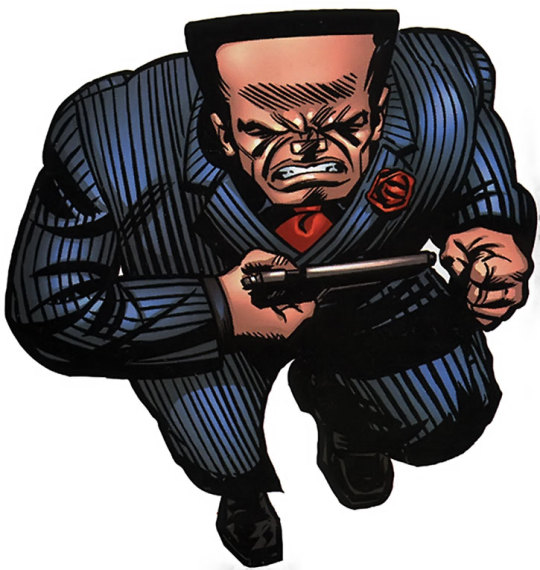
Silvermane
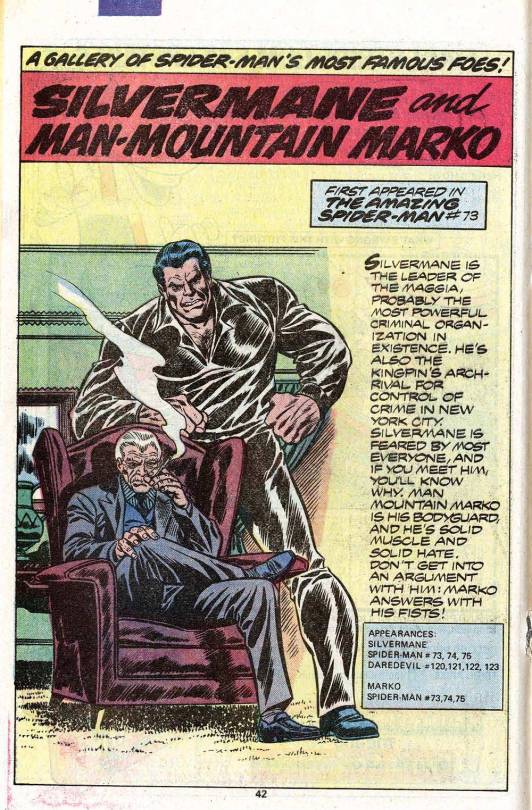
Don Fortunato
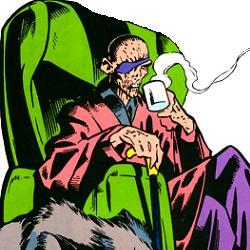
Tombstone
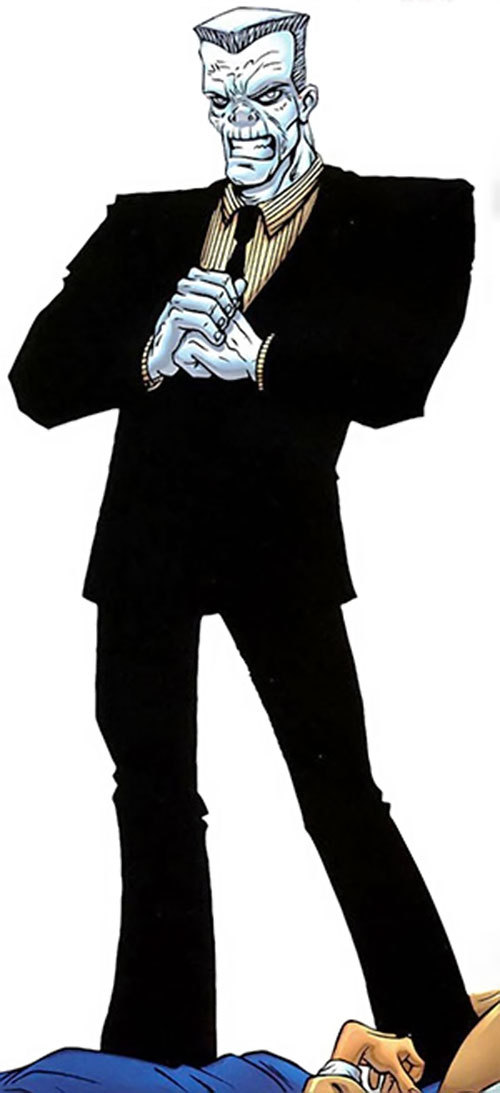
Man Mountain Marko
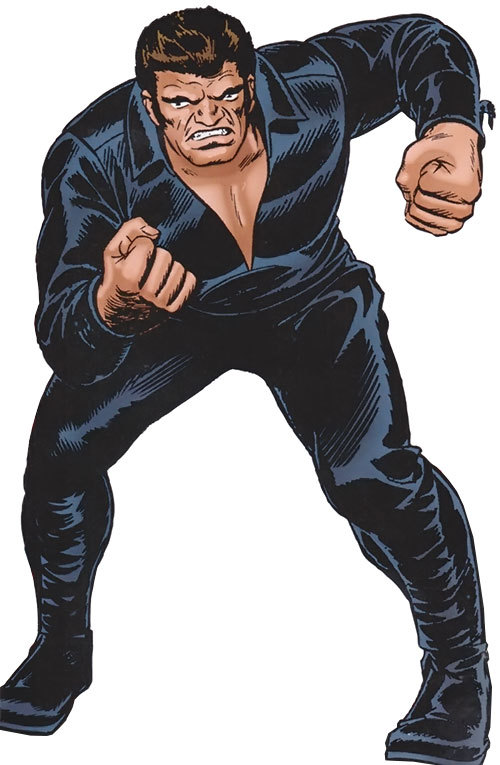
Mister Negative

The Rose

Delilah
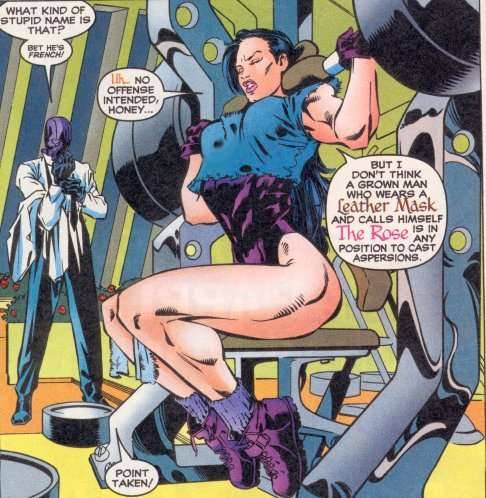
The Crime Master
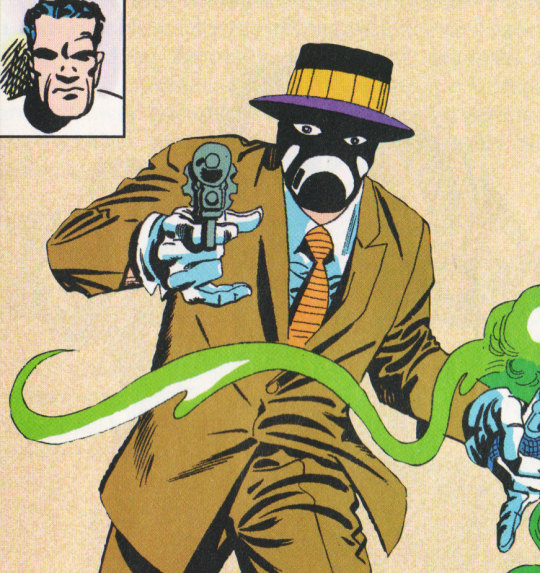
The Big Man

Black Tarantula
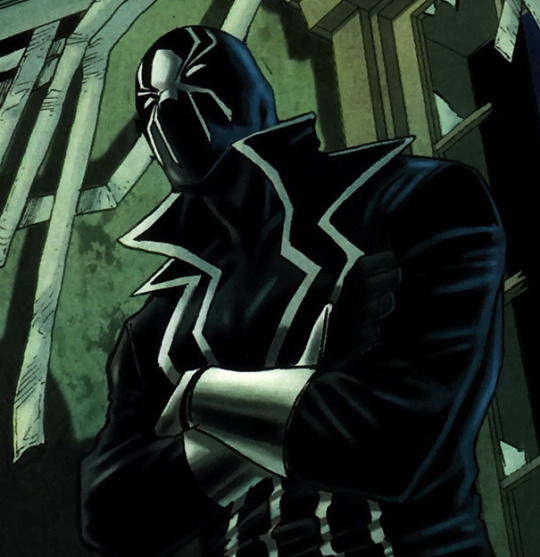
The Enforcers
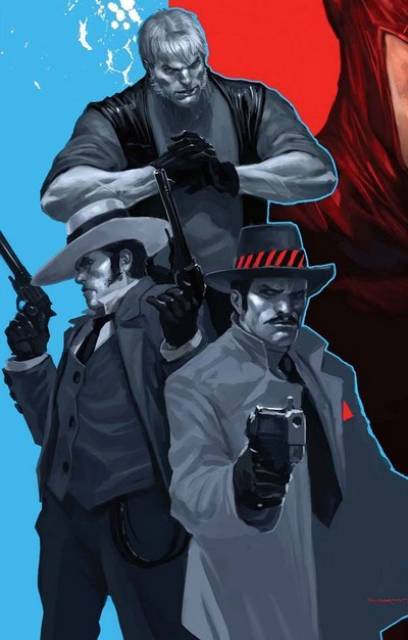
Gangsters one and all.
Gang war storylines have occurred more than once in Spider-Man’s comics and having him caught in the middle of one, trying to end the war for the sake of the civilians would present a realistic, complex and far more difficult to solve challenge for Spider-Man than ever seen before.
Spider-Man could come face to face with the realities of crimes which exist in our own real world and see how it’s not a battle with a true ending but one which he and other people must constantly resist all the same.
Spider-Man and the media
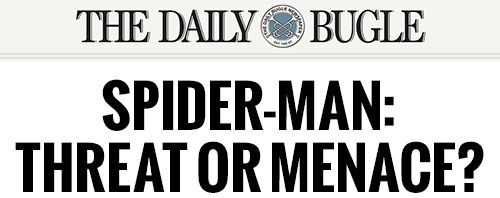
As perfectly cast as J.K. Simmons was as J. Jonah Jameson in the original Sam Raimi Spider-Man film trilogy it must be said the movies downplayed the character compared to the comic books.
Whilst he served the same basic function as Spider-Mans loudmouth skinflint boss who used yellow journalism to slander Spider-Man and make the city mistrust and hate him, he was ultimately a bit player in the proceedings of the trilogy.
In the comic books especially the early days of Spider-Man Jameson was almost the resident villain of the series, a lot of panel time was dedicated to him and his irrational vendetta against our hero. He and Spider-Man often exchanged harsh words and it seemed his persecution of Spidey was unrelenting. He was in fact one of the three most important recurring characters in the whole series during the original Steve Ditko run next to Spidey and Aunt May themselves.
Doing a movie which is actually specifically about Spidey’s relationship with Jameson and making the central focus the ramifications of Jameson’s smear campaign would not only be something original for a Spider-Man film but fairly original for a superhero film in general. Jameson isn’t a super villain nor is he truly evil. He’s just a greedy man with an irrational hatred stemming from deepset issues which themselves make him a compelling character.
The film could thus be about the abuses of power afforded to those who control the media and examine the responsibilities and role the press should hold, with a greater focus being upon the press’ obsession with celebrities and the detrimental effects they can have on their lives.
Once more this isn’t an enemy or a crisis Spider-Man can truly resolve or defeat, so much as learn to live with, which is once again something fairly unique for a superhero movie.
But just so we can have our bam smack pow superhero action we could draw upon one of two classic Spider-Man tales to generate a villain or two.
In Amazing Spider-Man #20 Jameson infamously helps create the Scorpion as a natural adversary to Spider-Man only for his creation to turn on him thus justifying Spider-Man save him. The Scorpion has never been done on film and fits Marvel’s mould of villains who are dark reflections of the hero. In fact that is why Jameson created the Scorpion, he was based upon a fellow (but bigger) arachnid.

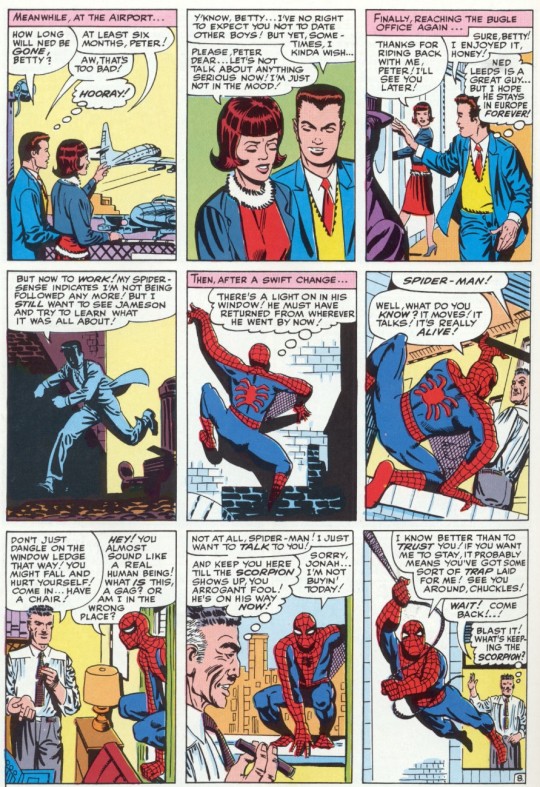
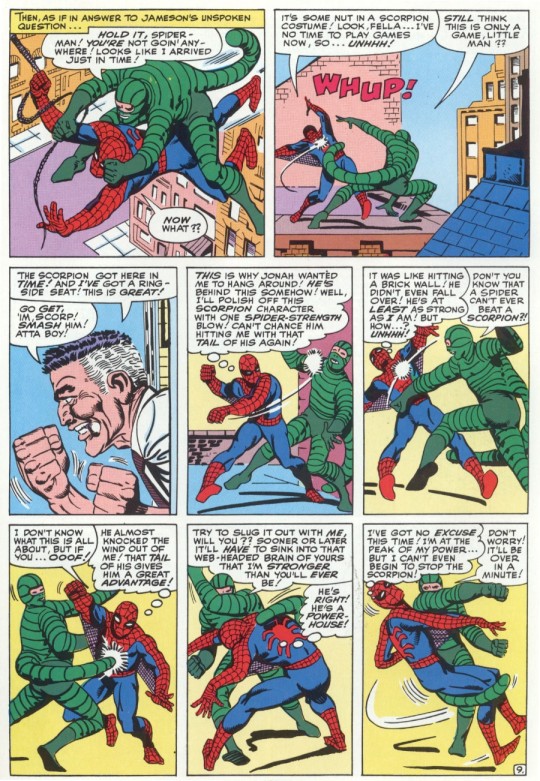

Alternatively we could draw upon a famous recurring element of Spider-Man lore, the Spider Slayers. Throughout his history Spencer Smythe and his son Alistair have created robots specifically designed to locate, capture and sometimes kill Spider-Man, with the designs of the robots offering a variety of interesting visuals. However many of the Spider Slayers were affiliated with Jameson who wanted to use them to rid the world of Spider-Man.
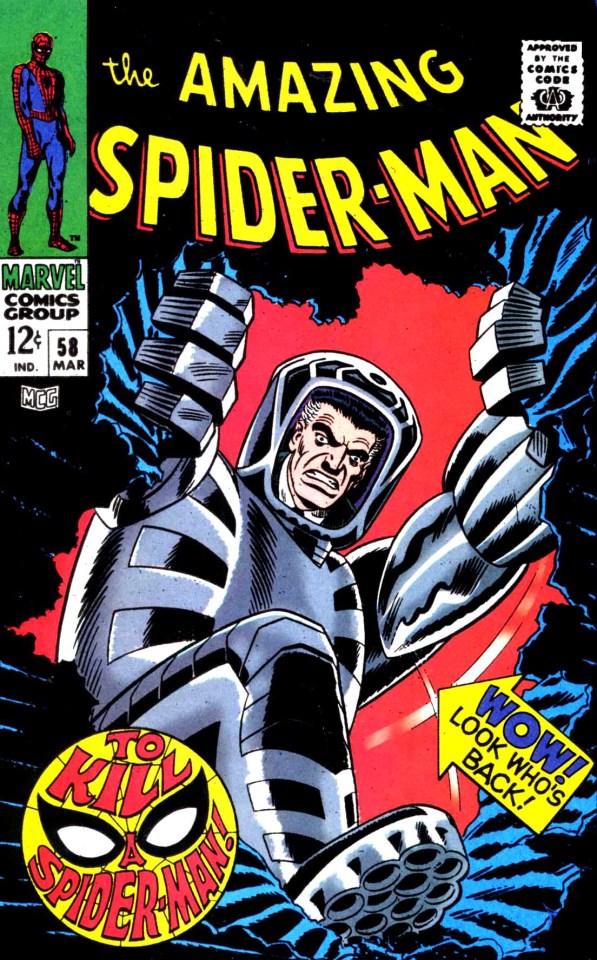
Perhaps one of the most famous Spider Slayer stories was the death of Spencer Smythe which involved Jameson and Spider-Man shackled together by a bomb counting down to their destruction. Adapting this would be a perfect way to bring the movie to it’s climax and focus in on the central relationship between Spider-Man and Jameson.
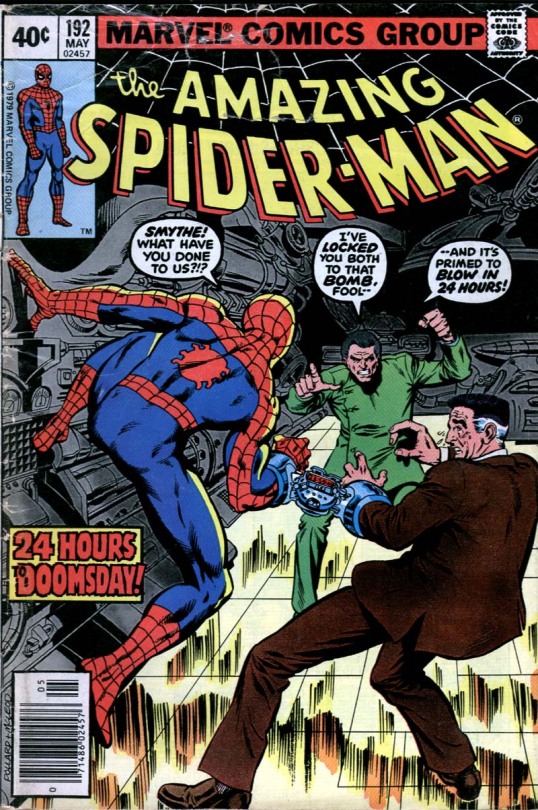
Peter Parker is a Mama’s boy
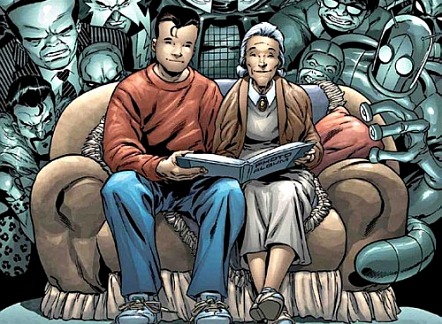
Love her or hate her, Aunt May is vitally important to the mythology of Spider-Man and his character. Hence she’s appeared in every Spider-Man movie to date.
She is also his mother. Not biologically, but in all the ways that really matter she is his mother.
Many stories (sometimes to an exaggerated extent) have showcased Peter’s affection for May and her doting attitude towards him. But like Jameson we’ve only seen this in the movies as part of larger plots where it isn’t really the point. When done right it’s really endearing and something relatable to most people.
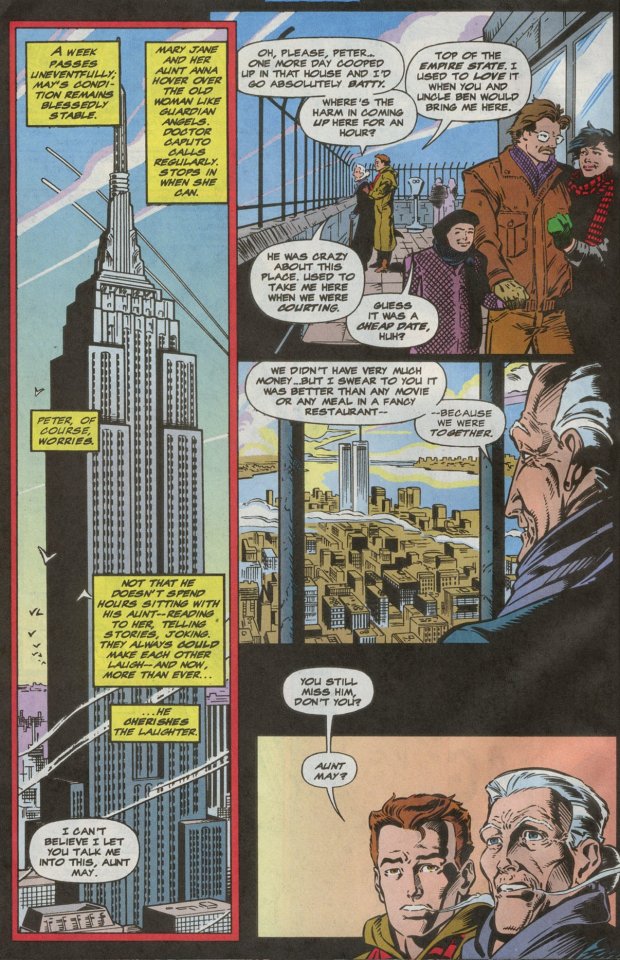

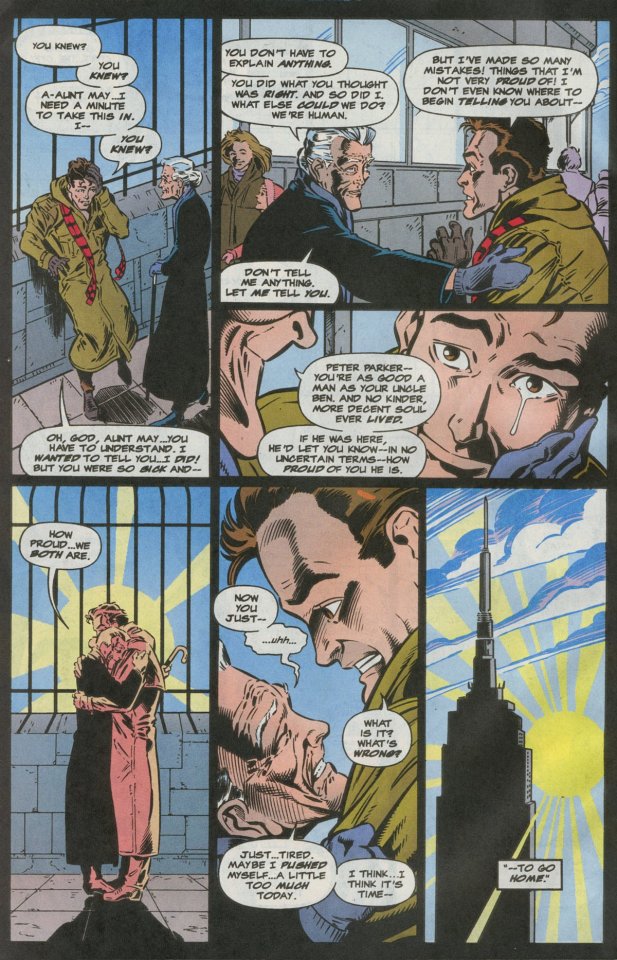


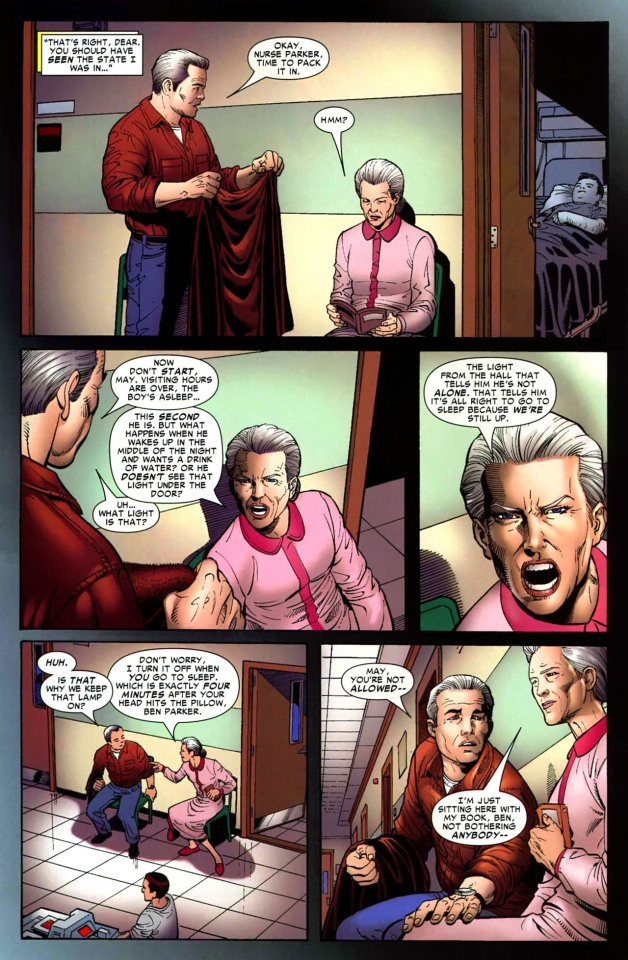
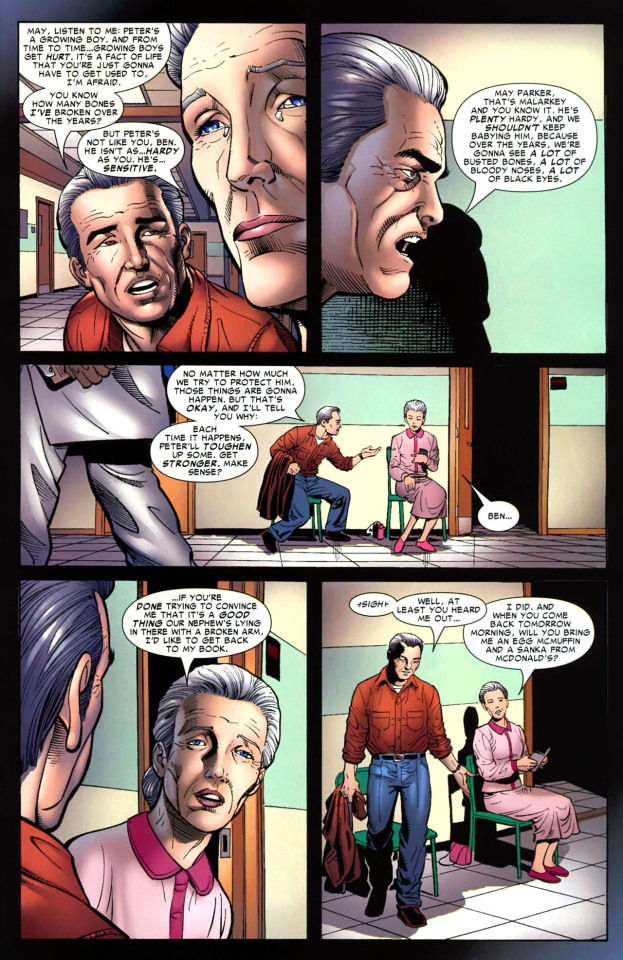

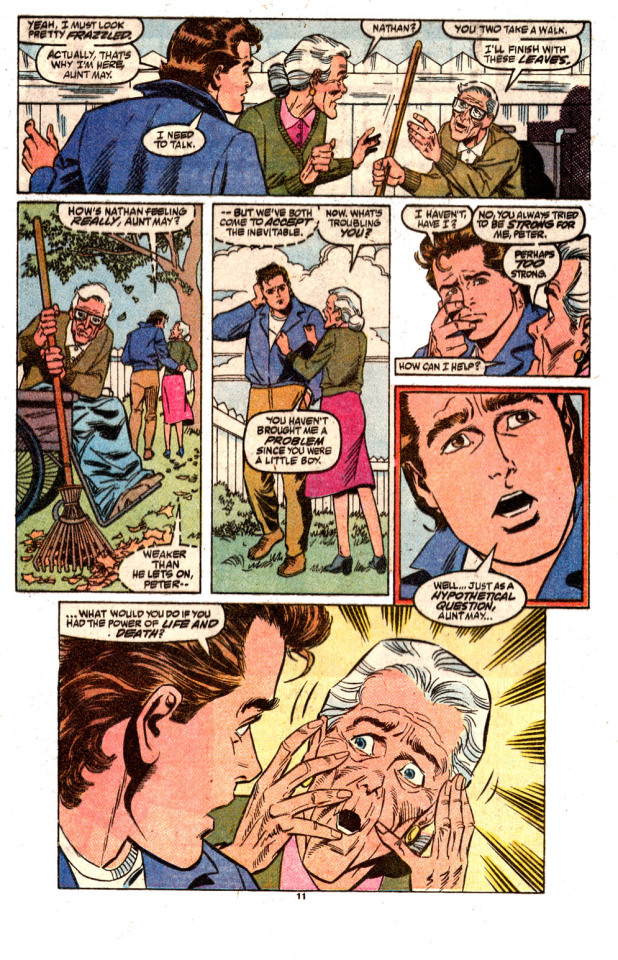
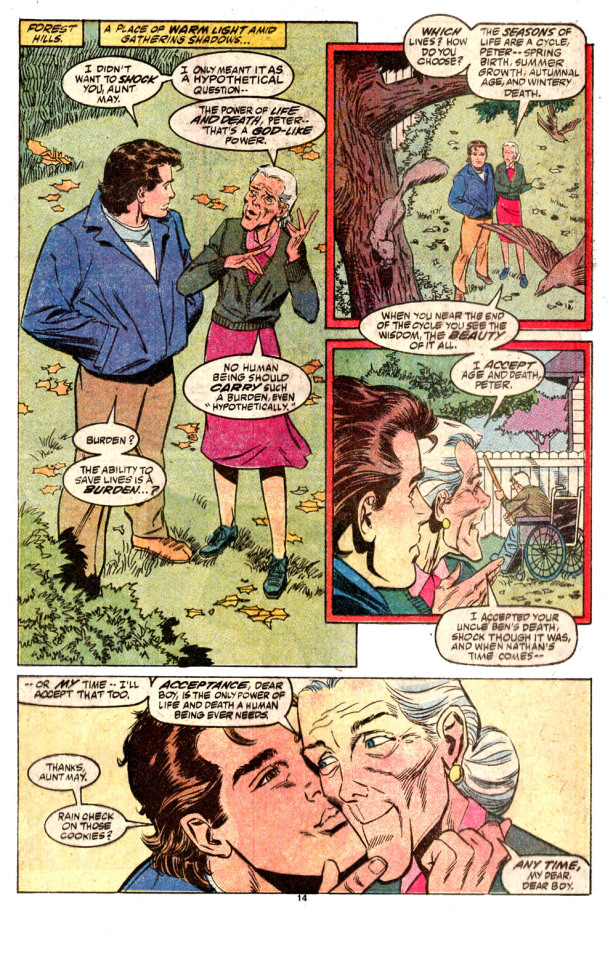
Instead of a Spider-Man movie which is about Peter Parker’s romance with a woman, his rivalry with a new villain, the mystery of his dead parents or (ugh) his teacher/student relationship with someone like Iron Man, why not make the heart and soul of this movie about a parent and child, specifically a mother and her son.
Films like Logan prove that that can work but the unique twist of this movie would be that the focus isn’t upon someone learning to be a parent or a father/son relationship or a mother/daughter relationship or even a father/daughter relationship. Rather it’d be the far less focussed upon mother/son relationship.
Even in movies which do focus upon a relationship like this things typically play out wherein the mother is fridged, or it’s about a woman learning to be a mother, or a woman struggling to survive for the sake of her son or where the relationship is strained (think Tony Soprano and his mother).
Instead this would be a movie about a kid and his mother figure coming to together to cope and survive in a world now bereft of the most important person in both of their lives who supported them both.
And the central basis of this movie could be arguably THE most iconic Spider-Man storyline of all time, the Master Planner trilogy. Allow me to give you some cliffnotes from the story.
A new gang working for a criminal called the Master Planner who plans his schemes meticulously so they go off without a hitch butts heads with Spider-Man. Meanwhile Aunt May is feeling incredibly unwell as Peter Parker goes to his very first day of college. Later she collapses and we learn that she’s dying, poisoned by a blood transfusion Peter gave to her many issues ago. A potential cure can be created from the expensive ISO-36 chemical.
Peter pawns most of his and May’s possessions to buy the chemical but the Master Planner steals it believing it could be of use in his experiments. Spider-Man uses a Daily Bugle journalist to help him get a lead on the whereabouts of the Master Planner and he proceeds to bust up the criminal underworld, desperately seeking information of the MP.
Finally he learns that the MP is in a secret underwater base so Spider-Man has to swim beneath the Hudson river, infiltrate the base, fight off the hordes of armed henchmen and finally confront the Master Planner himself, who is in fact DOCTOR OCOTPUS.
As they fight Spider-Man is trapped under several tons of heavy metal rubble, with water quickly filling the room and the ISO-36 just out of reach. Then in an endlessly homage and utterly iconic scene Spider-Man ruminates upon how he cannot allow himself to fail Aunt May like he did Uncle Ben and gradually summons all of his strength and in a supreme act of willpower throws off all of the rubble in the greatest Spider-Man splash page of all time.
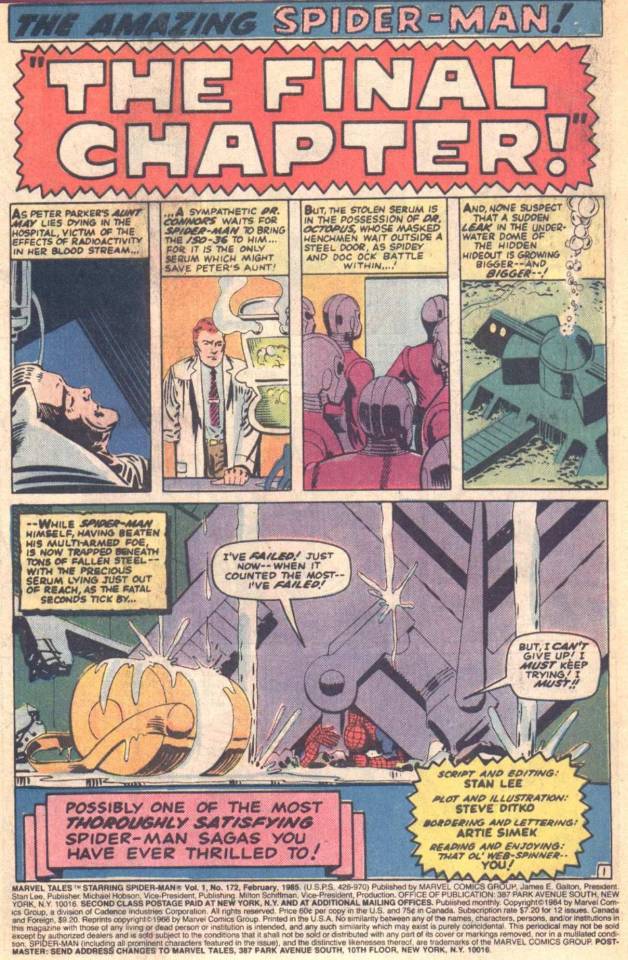
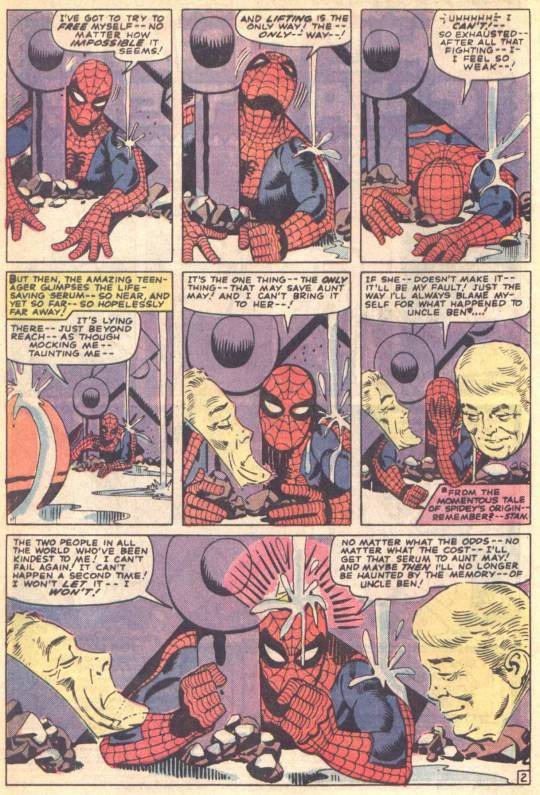
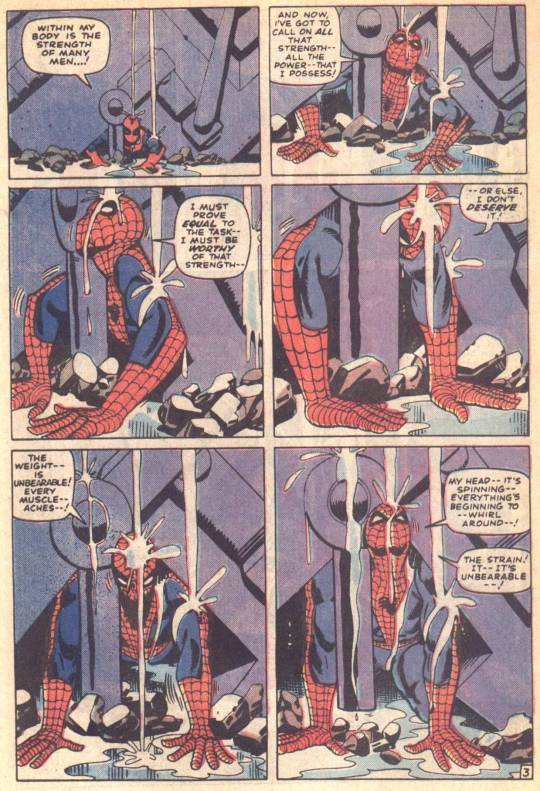


He then gets the ISO-36 swims back to the surface, fights some of Doc Ock’s goons underwater, then despite his exhaustion single handily kicks the rest of their asses before getting the chemical to the doctors just in time to save Aunt May.
Now sure that isn’t everything that happened and you’d have to tweak a few things to make it work as a self-contained movie about a high schooler...but...goddam...how does all that NOT sound like the most baller Spider-Man movie ever!?
There’s action, there’s tension, irony, human drama, heroism; it’s got everything!
Now you see those three idea I just tossed out?
Well with one exception all of them are based upon the original Steve Ditko run of Spider-Man. In fact not even all of the Ditko run, just the first 33 issues.
None of them involve retelling Peter Parker’s origin.
None of them involve repeating material or storylines we’ve seen in other movies before apart from Spider-Man fighting Doctor Octopus which is in my suggestion not even the point of the movie.
I just made all of those suggestions up off the top of my head based upon less than the first five years of Peter Parker’s existence.
I could probably make up even more if I cast my net further and spend a bit more time considering it.
So tell me again how there are no new ideas for a Peter Parker Spider-Man movie?
Tell me how the only way to make the franchise fresh again is to use another character other than Peter Parker?
Go on. I dare ya?
#Peter Parker#Miles Morales#Spider-Man#Ultimate Spider-Man#mcu#marvel cinematic universe#Spider-Man: Homecoming#Marvel#marvel comics#Aunt May#May Parker#J. Jonah Jameson#Scorpion#Mac Gargan#Spencer Smythe#alistair smythe#Kingpin#Hammerhead#Tombstone
31 notes
·
View notes
Text
Where to Stream ‘Spartacus’ and Other Great Kirk Douglas Performances
Cast as a leading man from early in his career, Kirk Douglas, who died Wednesday at 103, commanded the screen with a booming voice and chiseled physique, but he also showed enough humility to allow for more complicated heroes — and even a couple of outright heels. At the height of his powers, Douglas broke away from his studio handlers, formed his own production company, and joined forces with Hollywood rebels and outsiders like Stanley Kubrick and Dalton Trumbo. Here are 13 films that illustrate his range, durability and swarthy magnetism.
1947
‘Out of the Past’
It’s a mark of Kirk Douglas’s charmed career that his second feature is widely considered a film noir staple, though his casting as a straight-up heavy would turn out to be a rarity. Of the beautiful shadows in Jacques Tourneur’s classic tale of double-crosses and bad romance, Douglas looms as the darkest, a crime boss who summons a small-town gas station attendant (Robert Mitchum) to do a job for him. The two men have a past together, when the gangster hired Mitchum’s then-private eye to track down his diabolical mistress (Jane Greer), who split to Acapulco with $40,000 of his money. The femme fatale puts them at odds.
Based on a Ring Lardner short story, “Champion” is a boxing drama as tough and tormented as its hero, a poor Irishman (Douglas) who accidentally stumbles into the undercard of a fight and winds up brawling his way toward the top of the profession. Yet this isn’t the inspirational tale of an underdog made good, but a gritty film noir about an impulsive drifter whose moxie and ragged charm are short-circuited by a nasty temper and a stubborn pridefulness. When he fails to honor the dictates of the game’s corrupt elites, it threatens his career — and his life.
Where to watch: Rent it on iTunes, Amazon and Vudu.
1950
‘Young Man With a Horn’
As in “Champion,” Douglas plays a poor, willful iconoclast who refuses to play by the rules, but “Young Man With a Horn” has a more luscious, romantic quality, courtesy of the director Michael Curtiz (“Casablanca”). Inspired by the short and influential life of jazz soloist Bix Beiderbecke, the film starts with Rick Martin as an orphan who scrapes together enough money to buy a trumpet. Under the tutelage of an accomplished jazzman (Juano Hernández), he becomes a prodigy, but his improvisational flair, in music and in life, leads to strained relationships and a descent into alcoholism. Lauren Bacall’s turn as a woman of ambiguous sexuality is a fascinating footnote, but the alternately joyful and bittersweet performance sequences are most enduring.
Where to watch: Rent it on iTunes and Amazon.
1951
‘Ace in the Hole’
Hays Code censors, Paramount Pictures and American moviegoers rejected Billy Wilder’s caustic satire in 1951, but time has only affirmed its ugly truths about tabloid journalism and its corrosive effect on society. Douglas’s willingness to play the heel, combined with his man-of-the-people charisma, made him the ideal choice to star as Chuck Tatum, a former big-city journalist who creates a media sideshow around a man trapped by a New Mexico cave-in. Feeding the story as much as reporting on it, Chuck gives himself scoop after scoop while turning the site itself into a tourist trap. “Ace in the Hole” decries journalistic malpractice, but it reserves plenty of contempt for the culture at large, which feeds off the story voraciously without thought to the human consequences
Where to watch: Rent it on iTunes and Amazon.
1952
‘The Bad and the Beautiful’
The director Vincente Minnelli’s highly charged drama about an unscrupulous movie producer and the three successful careers he both launched and sabotaged gets at the contradictions of Hollywood, where dreams are made and discarded with breathless speed. Gathered together at a studio office, a director (Barry Sullivan), an actress (Lana Turner), and a screenwriter (Dick Powell) each flash back to their experiences working with the producer (Douglas) who nurtured their talent, only to betray them. They swear off working with him again, but as the scorpion in this scorpion-and-the-frog scenario, Douglas is awfully persuasive.
Where to watch: Rent it on iTunes, Amazon, Vudu, Google Play and YouTube.
1954
‘20,000 Leagues Under the Sea’
Photographed in CinemaScope and Technicolor, and supervised by Walt Disney himself, “20,000 Leagues Under the Sea” remains a model of Disney live-action cinema — broad, silly, colorful and loaded with wonders. The underwater discoveries of the Nautilus, a wondrous submarine commanded by the mysterious Captain Nemo (James Mason), may be the main attraction, but Douglas’s robust performance as a master whaler offered early proof that the force of his personality couldn’t be blunted by spectacle. His song-and-dance number, “A Whale of a Tale,” suggests a future in musicals that he never got around to pursuing.
Where to watch: Stream it on Disney Plus. Rent it on iTunes, Amazon, Vudu, Google Play and YouTube.
1956
‘Lust for Life’
The same overweening passion that propels and destroys Douglas’s characters in “Champion” and “Young Man With a Horn” applies to his take on Vincent van Gogh in “Lust for Life,” a biopic that follows the artist deeper into an obsession that eventually kills him. Working again with the director Vincente Minnelli, whose eye for color aligns with van Gogh’s, Douglas opens the film as a Protestant missionary who devotes himself to helping the poor in coal country, then pivots when he discovers painting, a craft that leads to frustration, poverty and madness. “Lust for Life” is perhaps best remembered, however, for van Gogh’s contentious back-and-forth with Paul Gauguin (Anthony Quinn), a relationship in which shared interests curdle into vicious rivalry.
Every bit as scabrous as his “Dr. Strangelove” — and nearly as funny, though the laughs stick in the throat — Stanley Kubrick’s antiwar film offers Douglas as a beacon of sanity and decency in the midst of an irrational, needlessly tragic situation. As leader of the 701st Regiment of the French infantry during World War I, Douglas’s Colonel Dax gets the order to attack a heavily fortified German position. When this impossible mission inevitably fails, his superiors try to save face by ordering three men to be executed for cowardice, and it’s up to Dax to defend them in court-martial. In measuring the absurdity of the situation against the human cost of war, Kubrick draws a stinging conclusion about how wars are waged and who pays the price.
Where to watch: Rent it on iTunes, Amazon, Vudu, Google Play and YouTube.
1957
‘Gunfight at the O.K. Corral’
With slick-backed hair and an irrepressible grin, Douglas plays Doc Holliday as a quick-fingered outlaw who always has the drop on his enemies and looks pleased with his own virtuosity. “Gunfight at the O.K. Corral” pairs him with Burt Lancaster as Wyatt Earp, a lawman who steps down from his post and enlists Holliday in a showdown in Tombstone, Ariz, against the murderous Clantons. John Sturges’s unfussy telling of this famous Wild West story casts two legends-in-the-making as two legends-in-the-making and allows their chemistry to carry his diverting Western forward.
Where to watch: Rent it on iTunes, Amazon, Vudu, Google Play and YouTube.
1960
‘Spartacus’
Though stirring as a tribute to rebellion and justice against authoritarian rule, “Spartacus” doubles as a monument to Douglas himself: his chiseled physique, his booming voice, his noble bearing and his political sympathy toward the disenfranchised. Douglas would tweak that image throughout his career, but not in Stanley Kubrick’s sumptuous sword-and-sandal epic about a slave who leads a rebellion against the Roman republic. Spartacus isn’t a particularly rich character — Kubrick would later distance himself from the film for this reason — but the scope and grandeur of the production remains seductive, and its reputation has rightly improved since a 1991 restoration.
Douglas helped end the blacklist by securing a screenplay credit for Dalton Trumbo on “Spartacus,” and their working relationship continued with this utterly unique western, which upends a conservative genre with a strong leftist bent and anticipates the revisionist westerns that would arrive later in the decade. Photographed in stark black-and-white, “Lonely Are the Brave” stars Douglas as a cowboy who first appears to be ambling through the Old West … until he directs his horse across a New Mexico highway. A rebel and an anarchist, he deliberately gets himself thrown in jail in an effort to break out a friend who’s been arrested for helping illegal immigrants.
Where to watch: Rent it on iTunes, Amazon, Vudu, Google Play and YouTube.
1964
‘Seven Days in May’
Fresh off his electrifying thriller “The Manchurian Candidate,” the director John Frankenheimer continued to engage in the insidious politics of the era with “Seven Days in May,” which imagines a plausible future when the military orchestrates a coup against a sitting American president. With Burt Lancaster as the general who spearheads the coup from his post on the Joint Chiefs of Staff, Douglas plays his Pentagon subordinate, who catches wind of the plot and works frantically behind the scenes to stop it. Frankenheimer’s no-frills, black-and-white, documentarylike style adds to the sensation that American democracy could collapse under the right circumstances.
Where to watch: Rent it on iTunes, Amazon, Vudu, Google Play and YouTube.
1978
‘The Fury’
Douglas was 60 years old when “The Fury” was released to theaters, and the film’s director, Brian De Palma, allots much of his screen time to marveling over him as a physical specimen, whether he’s gunning down assailants in the Middle East or performing acrobatics across the elevated train tracks in Chicago. De Palma’s terrific follow-up to “Carrie” also delves into psychic powers, casting Douglas as a former C.I.A. agent trying to find his son, who’s been abducted by the government as part of a telekinesis program. Amy Irving plays a powerful young psychic who tries to help him, and John Cassavetes is delectably evil as the old colleague who’s behind the kidnapping.
Where to watch: Rent it on iTunes, Amazon, Vudu, Google Play and YouTube.
from WordPress https://mastcomm.com/where-to-stream-spartacus-and-other-great-kirk-douglas-performances/
0 notes
Text
Capstone 2: Rhetorical Analysis From Hell
"25 Songs That Tell Us Where Music Is Going" is an article edited by Nitsuh Abebe. This article is a long and complicated collage of abstract essays written by 25 different authors. This article is more like an art exhibit showcasing 25 pieces of work with multiple different outlooks, but Abebe is the curator taking the initiative to display these pieces of work in this journal exhibit of sorts. These 25 essays concern the musical artists, their public images and their backgrounds, rather than the music itself like the title implies. Not only is Abebe's title misleading, but his thesis lacks clarity to what his main point of the article is. After reading this article in its entirety, it's still not clear to me as a reader where music is going. Abebe's attempt at editing this multimodal article is overall unsuccessful because he lacks organization and structure in the piece. As a curator of written and visual works, Abebe lacks a clear thesis and connectivity of his main point to his supporting evidence.
There is hardly any cohesion or connectiveness throughout the article, from its weak thesis all the way to the voice and style of all the different authors. The biggest problem regarding cohesion was the lack of a strong and clear thesis. Even after reading this multiple times, I'm not sure what Abebe's main point really is. He implies that it's about identity, but whose identity? Is it the music’s cultural identity, the artists identity and their background, or the identity of the audience? This is the only clue Abebe provides his readers in the introduction to what the main point really is:
“This is what we talk about now, the music-makers and the music-listeners both. Not the fine details of genre and style — everyone, allegedly, listens to everything now — but the networks of identity that float within them.”
Even though the thesis is not clear enough for formulate an opinion, one thing I am positive of is that this article has nothing to do with where music is going. Not having a clear thesis brings the credibility of his article down a notch and confuses the reader. I'm not implying that because Abebe has a weak thesis that his article is altogether awful; there is still some strong evidence present. However, the good parts get lost in the shuffle because he doesn't make the proper connections to clarify his main point whatever it may be.
Another confusing aspect of this article is how scattered the voices and styles are; this is to be expected when you use so many different authors as examples but it doesn't make it less confusing. This is yet another reason why Abebe needs to provide more of his own voice and style in the piece. He can achieve this through transition paragraphs and a conclusion, so the reader can have some consistency in the voice and style.
One main structural issue is the lack of transitions between essays. The article jumps from one piece of evidence to the next offering absolutely no flow. This makes the piece quite confusing and choppy. By providing transition paragraphs Abebe could connect his evidence together and clarify his main point, which would clear up some of the readers’ confusion. For example, the ending of the 7th song “One Night” by Lil Yachty and the beginning of the 8th song “Rewind” by Kelela have no transition between them to ease this shift in evidence that the different authors provide. The last paragraph of the 7th essay written by Jamie Lauren Keiles states:
“It might all be a gimmick, but it doesn’t feel random. If rap music is founded on a process of layering — autobiography with references and samples — then Yachty does the same for the rap career itself, mixing what’s trending with the right group of friends and tying it together with the loose thread of a sound. If it isn’t good rap, then it’s the perfect kind of music for those of us barely treading water in the zeitgeist, who can’t understand new music by ear. Yachty had to do his research, just like the rest of us.”
This paragraph focuses on how Yachty constructs his music through research and meticulous planning, then Abebe completely switches gears to Kelela’s musical aesthetic and public image in the beginning of the 8th essay written by Jenna Wortham:
“The 33-year-old musician Kelela favors the kind of fashion aesthetic that science-fiction films sometimes use to signify characters from the future: gravity-defying materials in iridescent or metallic colors...She raised her hands and gave a hard stare to the crowd. ‘My mission tonight,’ she said, ‘is to show the breadth of R.&B. music. It has influenced every genre, pretty much, so anyone who thinks it is basic or rudimentary has another thing coming.’”
Abebe could improve his article immensely if he just provided his readers transition paragraphs between the essays, connecting the beginning of one essay to the ending of the previous one. This would not only help him to tie his evidence back to his original thesis and strengthen his argument, but also to shift more smoothly to his next piece of evidence which would help to reduce the overall choppiness and clear up some of the confusion. To make this clear, Abebe is simply the editor or the curator of this article not the actual author. So therefore he needs to provide some guidance to his audience in the form of transition paragraphs, like how art exhibits provide the viewers with descriptive plaques explaining what each piece is and the relationship to exhibits theme.
Another structural problem is how long the article is, and since there are no transitions to connect the pieces together, the main point is completely lost by the end. Abebe make a big mistake when he provided absolutely no conclusion to finalize and wrap up his ideas. Instead the piece just abruptly ends leaving the reader quite confused to what just happened. He could also improve his article by changing the title because the current one is misleading. Abebe probably used this title to draw readers in but the introduction might have made them stop reading altogether when they realized his main point is actually concerning identity rather than the songs themselves.
Lastly, the multimodality of the article was enjoyable yet still had its problems. One aspect that was thoroughly enjoyable was the accessibility of the music playlist on the side of the page. It provided all the songs at the tips of the readers fingers, so the reader didn’t have to scroll for hours trying to find a particular song to refer back to. Abebe also provided the same access at the beginning of each essay. The song, artist, and the ability to play the song were all displayed, along with the title of the essay and the authors name.
However, even with these few easily accessible parts, the rest of the article was harder to navigate. For instance, the pictures used are far too big, some even take up the whole screen and you still have to scroll to see the whole picture. The picture of Kelela in the 8th song is a perfect example of this issue. Another issue is the consistency of the song introductions at the beginning of each essay, some are small and minimal while others color blocked the whole page. The difference can be seen very clearly between the 18th song “Fade” by Kanye West and the 19th song “Trolley Song” by Cecile McLorin Salvant. One last aspect that is unenjoyable is how the music plays out of nowhere when you scroll through the article, there should be some type of warning for the readers so they don’t receive such a shock.
Perhaps Abebe could clarify the main point of this article by changing the title but also by being more deliberate in his introduction, since that is the only place where his voice is truly heard. Overall Abebe needs to actively include his voice more into this piece, through the use of integrating a conclusion and transition paragraphs. This is important so the article isn’t seen as just a collage of essays, but rather a methodically planned assortment of essays concerning the identity of music. The changes that need to happen on the multimodal aspect of the article are minor problems compared to the far superior complications of structure and cohesion. These multimodal issues can be tweaked after the structural ones are dealt with, like rearranging the spotlights after the art is set in proper place at this hypothetical journal exhibit curated by Abebe.
0 notes
Text
Weekly Evaluations
Week 1 - For the first week, I wanted to lay down a solid base of an idea to set my project on, which I would tweak and add further details to as my design process continues. I started with my project proposal, where I pinpointed my overall topic and started to plan which topics I would explore. Whilst researching the topic of Lisa Frank, I did find that there was little to no information on the company’s website as its sole purpose is for selling apparel, rather than being biographical and displaying the company’s portfolio; to combat this, I turned to social media and found that, along with several second party sources, I was able to string together a reasonable history of the company. In order to gain a real life take on the topic, I wanted to include an area of research about a news headline from recent times, and I felt that the Orlando Nightclub shooting was a perfect fit. The majority of my planned research would be showing the treatment of the LGBTQ+ community in a positive light, and I felt as though this topic meant I could show that not everything is clear and happy despite how creative media usually show the community. Next week I plan to discuss more topics which will further help to pinpoint the specific style and what imagery I will include in my final designs.
Week 2 - After this week, I have distinguished that I will be showcasing a positive (yet also realistic) story in my final designs, alike those seen in my ‘Sick Of Losing Soulmates’ research. Due to the research I conducted into the ‘Blue Neighbourhood Trilogy’, I found that I didn’t want to show a negative story as I initially planned to appeal to a younger audience (although I will explore this further next week) and I wanted to be sensitive towards them. In addition to this, in my project proposal I listed that I would conduct research on transgender model Andrej Pejic, however I decided that due to this being focussed on gender identity rather than sexuality, this wouldn’t be particularly relevant to my topic (as well as there being little to no information to be found on them). Next week I will start the design portion of the unit.
Week 3 - Within this week, I fully changed the initial idea I had for colour schemes, although I had growing ideas of what imagery I would portray in my final designs. Instead of going for a bright, neon style like I initially planned, I ended up taking more influence from my research and ended up selecting a cool toned, three shades theme. Within this, I learned that sometimes your initial idea isn’t always the best idea to stick to, and that experimentation is key as something else may be best suited. My audience analysis largely helped in the sense of how I would show my topic and what that would entail. I pinpointed that I would be creating for a predominantly younger audience, so therefore I would have to ensure my imagery is sensitive and not explicit. Reflecting this in my initial designs, I now have a few solidified sketches and story ideas that I will develop next week.
Week 4 - This week my designs really started to take shape. Developing my initial ideas from last week, I made sure to constantly refer back to my research in order to solidify the link and ensure my project is cohesive overall. As previously mentioned, I planned to include a three toned colour scheme, although in addition to this, I also managed to incorporate colour connotations into the story as well, which really helped to strengthen the story as a whole. In regards to the written poem portion of my project, I tried a new journaling technique in order to be as organic and free as possible, and as seen on my blog post, I did experiment with several different verses before I settled on my final poem. The aim for next week is to start creating my final designs.
Week 5 - This week I started to draw out the rough sketches for my final designs. I managed to source reference imagery that was accurate and fit for purpose, and I did in fact end up combining several different images in one design to try and make as realistic of an image as possible. I did have some trouble with creating a clear sketch layer which I could use to create the final design, as my sketches were rather messy and unorganised due to a few of the image refs not lining up completely. I solved this by decreasing the opacity of said layer and spending a little extra time to ensure I had a solid outline I could trace. As this set me back slightly, I will start the final outlines next week.
Week 6 - One main problem arose this week; in my sketches from last week, I originally planned to include two separate images of my characters smiling with open mouthed smiles. When I first started making the final outlines, I had great difficulty making one of these look realistic due to the angle of the reference photo I used. Instead of searching for another and wasting time I didn’t have, I simply changed the image to be of the character smiling closed-mouthed as this is something I have experience with drawing and know how to do. Despite this issue, everything else turned out fine and I am ready to start colouring next week.
Week 7 - These next couple of weeks are being dedicated to colour my final designs. Experimentation was something I wanted to focus on in this unit, so I set about trying a new colouring technique; this meant that for every new section (e.g. face, lips, eyes) I created a new layer and combined them afterwards. As compared to how I’ve done this in the past, this new technique meant that I no longer had to worry about different section’s colours blending into each other, or using smaller brushes and not completely getting the final effect I want. Another technique I tried was the way I coloured the hair of my characters; as hair has the most texture of all of the image, I wanted to portray this, and the thick unblended lines in different tones really add dimension and tone.
Week 8 - Again, I continued with colouring this week. The main issue I faced was working out which tones in particular to use on each section of my image without them clashing, as the previous one I planned to use in my developed sketches didn’t end up looking completely fitting in their placements. This was a quick fix as all I could do was create different swatches and keep switching them around until I felt they looked okay. After looking at my previous work, I knew I wanted to include more detail in with the colour side of my design, rather than just in the outlines. I incorporated this by adding cross hatch shading in the corners of rooms and adding texture to skies and materials. As according to my plan, I finished the entirety of my designs and next week will be dedicated to adding final touches to the rest of my project as well as final written elements.
Week 9 - My final week was dedicated to making sure I was happy with everything on my blog and that I included everything I initially intended to. As I mentioned briefly on a blog post, I did have a small error in regards to my final presentation of my designs; as I had previously purchased three 12x12” frames to mount my designs in, I knew that when printing, this is the size my digital images had to be. The biggest paper size I could print on was A3, and unfortunately, this canvas size does not fit on this paper size, and so I had to crop some of the layers so they would fit. This was a quick fix as I knew my designs would be layered, so the layers in the foreground would hide any of the cropped sections visible. Luckily, I faced no other problems with the rest of my project.
0 notes